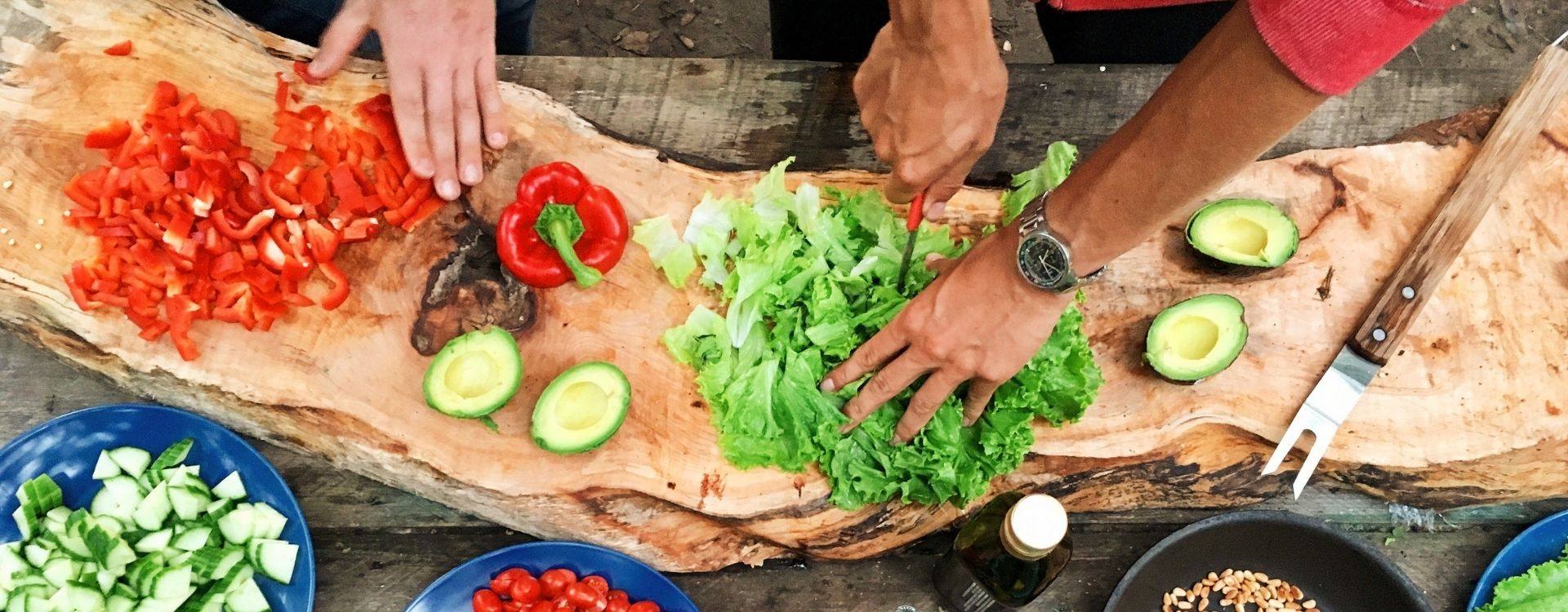Looking for a new way to consume CBD? Well, you’ve come to the right place because, in this article, we will be teaching you how to start cooking with CBD oil properly. And don’t worry, you don’t need to have Gordon Ramsay’s skillset to make delicious meals infused with the therapeutic benefits of CBD.
Cooking with CBD oil is becoming an increasingly popular way to consume CBD. Many people are averse to utilizing a tincture or oral spray for their CBD application. For some, regardless of the flavorings, they simply don’t like the taste of CBD, no matter what ingredients are supplemented to help mask the flavor.
But before you go and grab your spatula and head into the kitchen to start whipping up your CBD cuisine, we have composed a beginner’s guide to cooking with the compound. These are rules we suggest you follow in order to get the most out of your CBD-infused fare.
First, Consult with Your Doctor or Physician to Find Out if CBD Is Right for You
Before you get started with whipping up a CBD-infused meal — or add any type of CBD supplementation to your routine — first speak to your doctor or physician. While CBD has many potential medical benefits, you should consult with your physician on whether or not CBD could potentially interfere with any other medications you could be taking.
Next, Find Quality CBD Oil
An essential step in adequately cooking with CBD oil is to first start by finding high-quality CBD. There are thousands of CBD products in today’s growing market, and finding the correct one can be quite a task if you are not knowledgeable in the field. Always search for CBD products that are certified and have been tested by a third party. Companies like CaniBrands have all products tested by one of the industry’s leading labs for quality, potency, and purity. And we have the results to prove it!
Watch the Temperature When Cooking with CBD Oil
This is one of the most important parts of the cooking process, and it should not be overlooked. Keep an eye on the temperature of your oven or stove when cooking with CBD oil. Keeping a tight temperature control is essential when using CBD in culinary applications; because while heat is needed to decarboxylate the acids into the active form of cannabinoids our body can use, extreme temperatures can actually destroy many of the vital plant materials. Heating CBD oil above 300° F runs the risk of denaturing many important plant compounds found in CBD oil.
Ensure Your Measurements Are Accurate
Like the importance of monitoring heat while cooking, you must also measure your CBD correctly to ensure and maintain the compound’s benefits. To determine accurate measurements, you need to figure out two things: the dosage of CBD oil you will use in the recipe, and the number of ingredients.
Effectively cooking with CBD requires a precise ratio between the standard recipe and CBD oil. For example, if you’re baking, you don’t want to use the full recommended amount of butter or vegetable oil and then add in your CBD oil. Instead, you need to stay in the 2:1 ratio to maintain the integrity of the dish (and adequately incorporate the CBD).
Keep in mind; your ratios won’t be precisely the same for each recipe. Proportions will vary depending on what dish you’re making, how many portions you are making, etc. For this reason, it’s always best to use the “less is more” approach, and scale up if necessary.
Know the Difference Between Refined and Unrefined Oils
As is the case with all of our culinary cravings, sometimes we want something sweet, and other times, we want something savory. With this in mind, when you are preparing a dish you wish to incorporate CBD into, the type of oil refinement you use should be taken into consideration.
For example, refined oils tend to pair best with sweet recipes. Refined oils are not as pungent as the unrefined oils, and that means that you will barely even taste the CBD oil while you are eating your delicious dessert.
On the opposite spectrum, unrefined oils tend to have more present scent and flavor (though still minimal) and therefore pair excellently with more robust flavors like those in oregano, rosemary, etc. They create a great combination with the savory recipes, and they also have more amino acids and vitamins in them.
Don’t Get Carried Away!
Regardless of the specific recipe, we suggest that you don’t get overzealous with how much CBD you add into your dish or put it into all of the food and snacks you eat. Try to consume your CBD edibles at night, at least to start, and see how the compound interacts with your body. In many cases, CBD can induce a sense of calm and relaxation, leading to drowsiness. That is one of the primary reasons those who suffer from sleep-related disorders turn to CBD. With this in mind, observe how you react to consuming CBD before incorporating it into your daily meal routine.
Also, try to keep a low dosage of only 5 mg to start. It’s an amount that many consider to be the beginner dose. Much like cooking with CBD, it’s better to start with the “less is more” approach, because you can always increase your amount if you find the lower dosage doesn’t produce the desired results.
Final Thoughts
When it comes to cooking with CBD oil, the best way to think about it is to approach it like any other food recipe. It should be expected you will do some tweaking along the way until you lock in your ideal recipes and dosage. It’s perfectly fine to experiment with different tactics and ideas, as long as you keep this beginner’s guide in mind when putting together your next CBD-infused spread. We hope this can act as a catalyst for your cooking inspiration. Bon appetit!

